Varieties of purple tulips and features of their cultivation
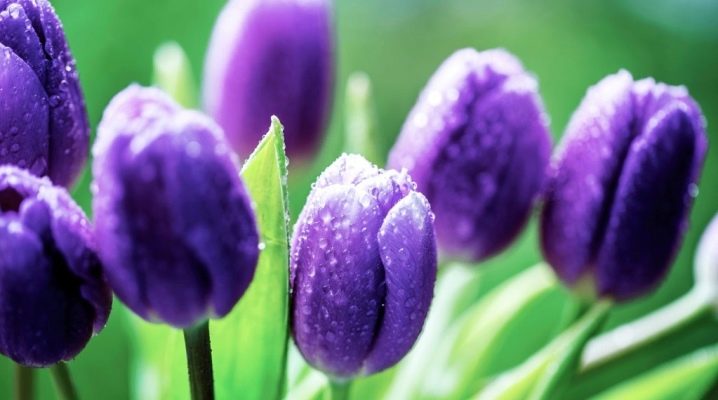
Tulips are beautiful flowers that our compatriots associate with the onset of spring. They are presented in many types and colors, but today let's talk about purple tulips. What varieties are there, how they differ and how to grow this flower at home.

Varieties
A gardener's dream is beautiful buds in the garden that do not require special care and are loyal to the place of growth. Therefore, many people make a choice in favor of tulips - quite unpretentious flowers, while having a completely presentable appearance. As for the purple flowers, their distribution began in 1930. During varietal work, the breeder discovered a plant of an unusual purple hue.
There are several dozen varieties of purple tulips. Especially popular ones that are recognized by flower growers, we will consider further.
- Queen of Knight. This flower has a royal name for a reason. It has a rich and very dark purple color, as well as very large buds that can reach a size of 10 cm.
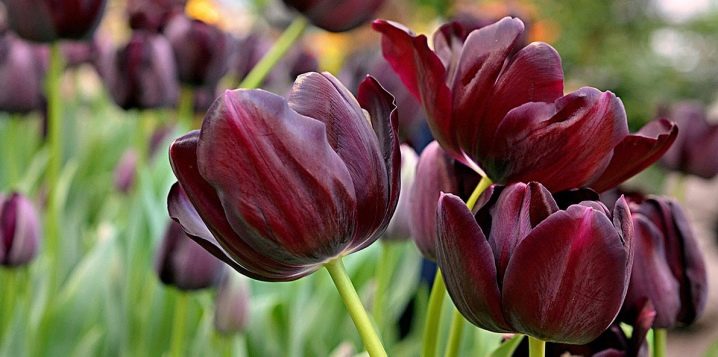
- Ballade. These tulips are distinguished by the unusual appearance of the buds. Their petals are pointed at the top and slightly curved. The plant has a lilac hue and a delicate white border. The flower requires competent and careful care, as various diseases can affect it.
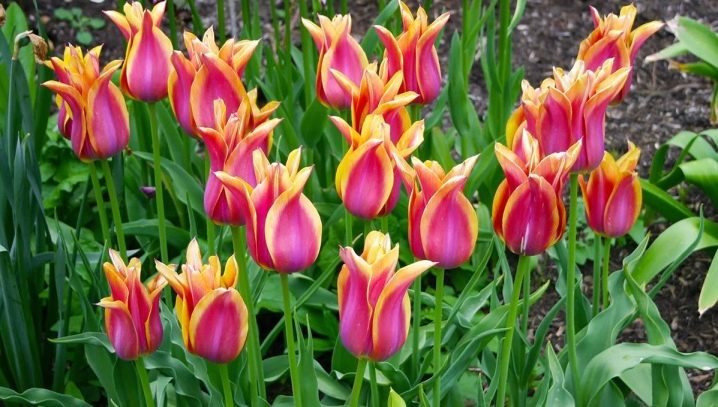
- "Canberra". It has medium - about 6 cm - buds. Their color is rich lilac, along the edge of the petals there is a blurred snow-white border. The flower is quite tall and can have a stem length of up to 60 cm.

- "Purple Prince". Outwardly it is similar to the "Kandera" variety, visually differs in a lighter basic tone, but the buds may be slightly larger.

- Djerba. A very tall tulip. Unpretentious to growing conditions. The buds are medium in size, the petals are painted in a light lilac color and have a small white border around the edges.

- "Sinaida Blue"... The variety is represented by tall bushes and large - up to 7 cm - buds. The color is lilac, along the edge there is a small white border.
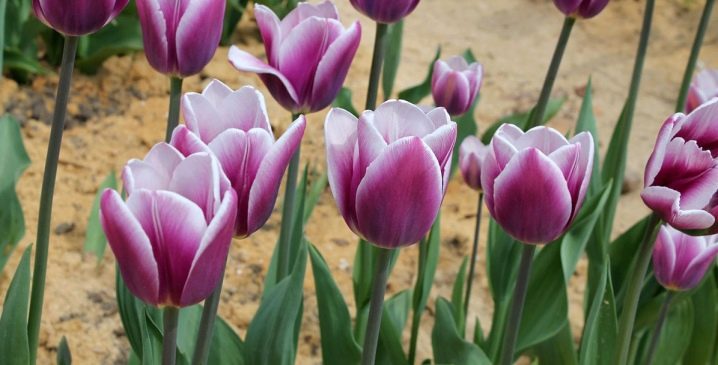
- Daan. One of the most unpretentious varieties. Resistant to frost, rarely subject to disease. It has lilac buds with a snow-white border around the edges. Variety "Daan2" differs in appearance, having pointed petals and a wider border. The flowers are quite large, the stems are high.

- Cummins. High grade - stems grow up to 50 cm. Lilac-colored petals have a white border and a small fringe along the edges. Flowering begins towards the end of spring. The plant requires care, it is susceptible to the development of various diseases.
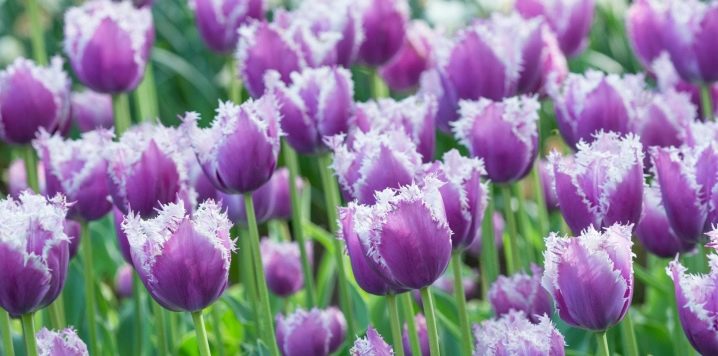
- "Rems favorite". Tulips can be up to half a meter in height. The purple petals have a very wide white border. They are frost-resistant, immune to diseases and pests.
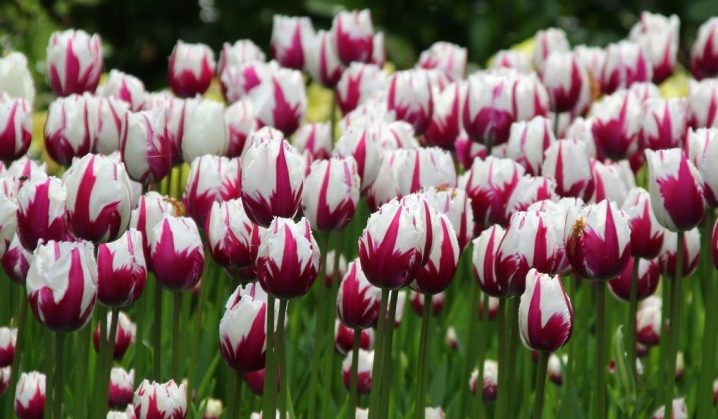
- "Pearl Crystal". The flowers of this variety are very bright, have a spectacular dark purple hue, in low light they look almost black. There is a small fringe along the edges of large buds. Tulips are capricious and require the care of flower growers.
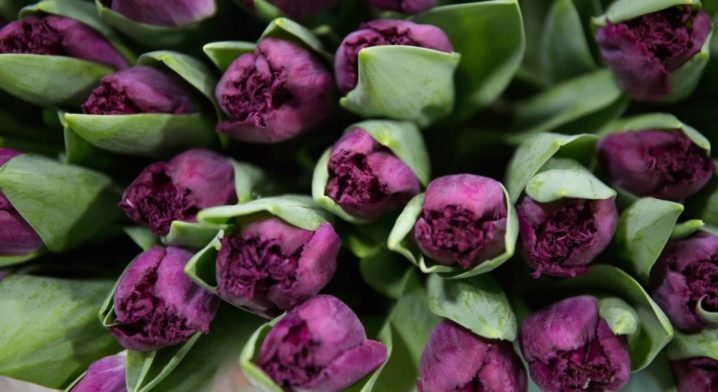
- Blue Ribbon. Flowers, contrary to the name, have a lilac hue, and they acquire blue only in low and dim lighting, for example, in the rain or in the evenings. Bushes are small, up to 35 cm in height, medium-sized buds.
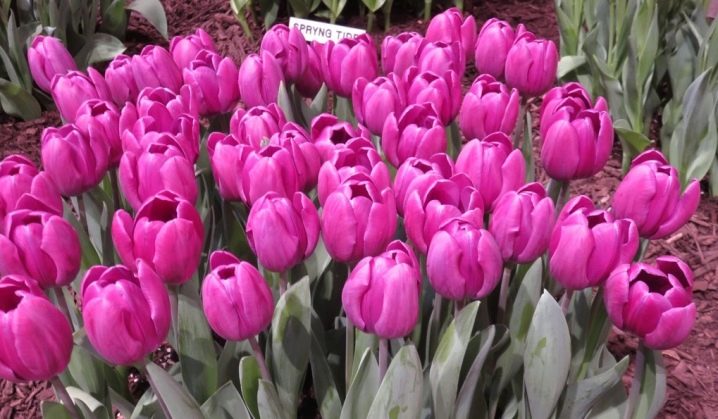
- Walflower. Although this flower has low stems, it can boast of huge - up to 12 cm - buds. The shade of the flowers is dark purple. Tulips are absolutely unpretentious and do not create problems during the cultivation process.

- Atlantis. This variety has high flowers reaching 70 cm. The color of the petals is white with purple. The buds are large and bright.
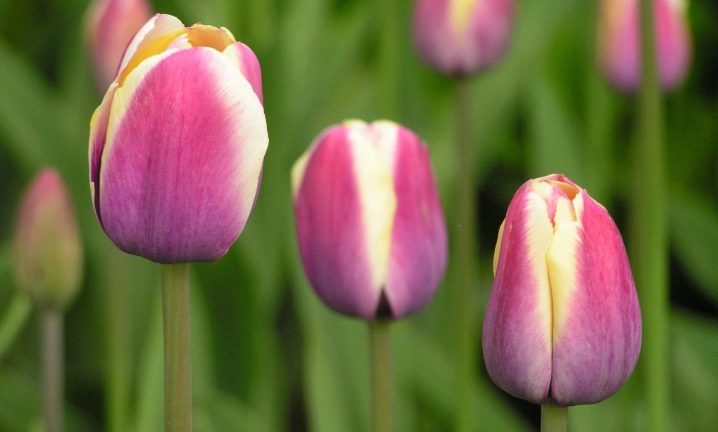
- Black Hero. These bright double flowers can reach over half a meter in height. The color of the buds is deep purple, but in the evening they turn almost black. The flowers are large - about 10 cm.
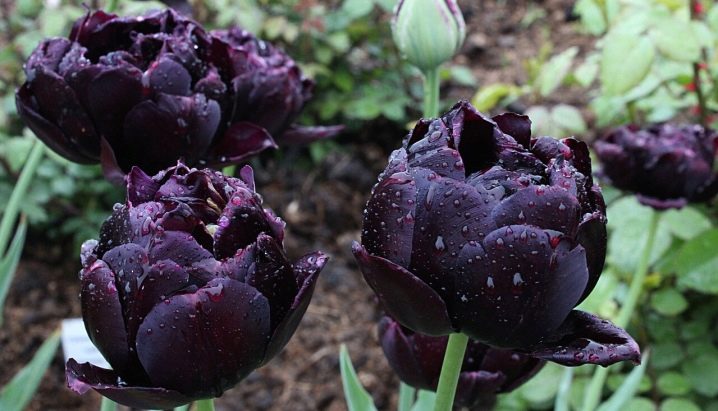
- Black Jewel. This variety is represented by terry tulips. The petals are deep purple in color and have a slight fringe. The buds are large, about 8 cm, and the stems reach half a meter in height.
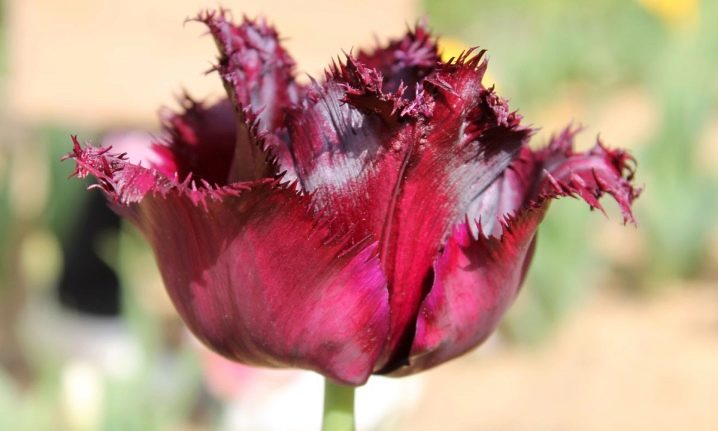
- "Lilak Perfection". Unpretentious variety. It has large double buds of a rich lilac hue. Not afraid of frost and disease.

- Shirley Dream. The varieties are represented by large - up to 9 cm - buds. The petals have a purple hue and white streaks. The plant is unpretentious in growing.
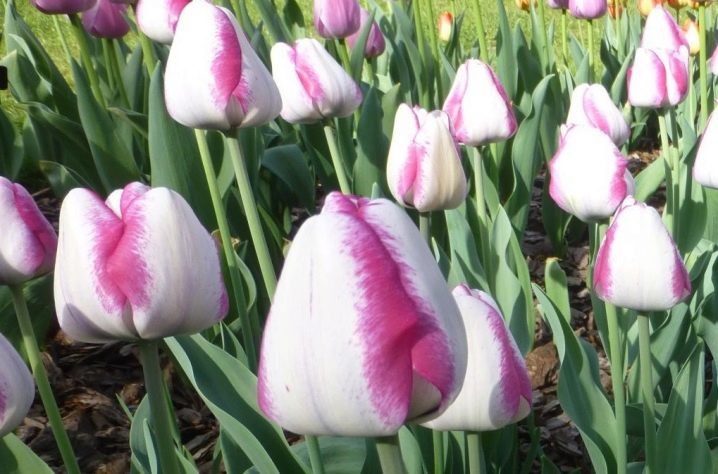
- Angola. They have a small - up to 45 cm - stem height. Satin buds, rich lilac shade, medium size.
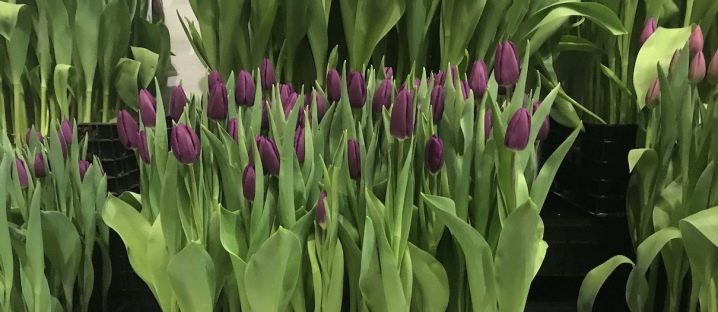
Site selection and soil preparation
Tulips love light, so this feature must be taken into account when choosing a growing place. Drainage of the soil should be ensured, as stagnant water is dangerous and can lead to the death of plants.
It is worth choosing a soil with a neutral acidity index. When preparing, one should not forget about saturation with useful elements, so it will be useful to add fertilizers, as which you can use ash and compost in equal proportions.
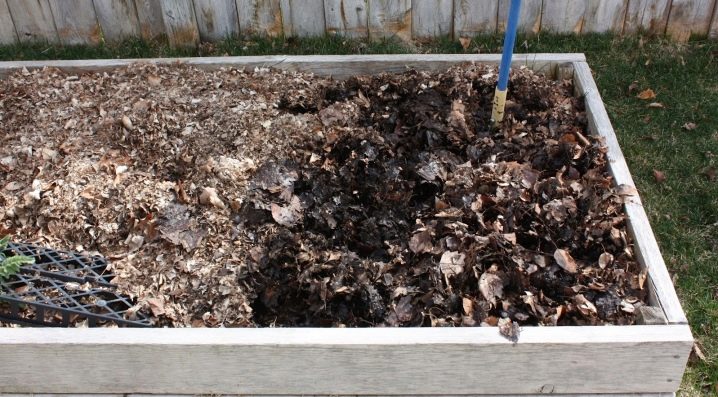
Planting
First of all, it is necessary to inspect the bulbs and discard damaged ones. It is imperative to disinfect by placing them in a weak solution of potassium permanganate for one hour. The bulbs are planted to a depth equal to three times its size. The distance between plantings should be about 10 cm, and between rows - at least 25 cm.
With the arrival of cold weather, mulching should be carried out. You can use dry leaves or compost in a thick layer for it. If you did not succeed in planting the bulbs in the fall, you can do this in the spring.
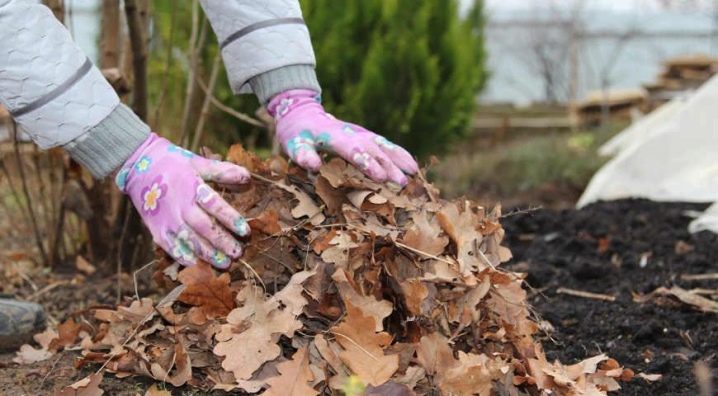
Care
We must not forget that tulips are moisture-loving - this will require the grower to regularly water. To avoid sunburn, the procedure is recommended to be carried out in the morning or evening, without touching the greenery and moistening only the soil. The soil itself must be periodically loosened and weeds removed, which interfere with active growth and can cause the development of various diseases.

The goal was achieved - tulips delighted the gardener with strong buds. After the beginning of flowering, you need to remove the seed pods. If this is not done, the flower will put a lot of energy into making the seeds ripe.
When the plants have bloomed, watering should be continued for another two weeks, and then gradually reduced. The bulbs should be dug up after the tulips have faded and turned yellow, and their buds have completely wilted.
For more information on caring for tulips, see the next video.
Fundamental rules
To get a beautiful and healthy flower, you must follow the basic rules of agricultural technology. During the growth stage of the plant, the soil is fertilized three times. It is possible to stimulate the development of greenery by adding nitrogen, to reinforce the buds with potassium-phosphorus dressings. Damaged and diseased plants are removed along with the bulb, and the soil is disinfected.
It is necessary to dry the bulbs in the shade, as they cannot stand direct sunlight. In case of insufficient snow cover, it is necessary to replenish it manually or carry out mulching. When cutting a flower, you need to make sure that at least 2 leaves remain on the stem. For planting tulips, a place where they have not grown for more than 4 years is suitable.








































































































The comment was sent successfully.